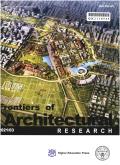The impact of the mega-event on urban morphology: Arbaeen event in Al-Najaf as a case study
IF 3.6
1区 艺术学
0 ARCHITECTURE
引用次数: 0
Abstract
This study explores the morphological changes resulting from mega-events, focusing on the impact of the Arbaeen event on Al-Najaf's city morphology post-2003. It examines the physical, socio-cultural, and economic transformations in Najaf's urban form by analyzing the city profile. The study uses a descriptive-analytical framework, employing aerial, satellite, and photographic imagery to assess urban impacts. Additionally, a qualitative approach is used, integrating field experiments, observations, interviews, and note-taking to evaluate the social and economic dimensions. The methodology is based on a case study approach for comprehensive understanding. Findings reveal that the Arbaeen event caused significant and rapid changes in Najaf's urban, economic, and social fabric, with varying impacts between the old city and the suburbs. The event profoundly influenced Najaf's morphological evolution, leading to substantial alterations in urban structure and increased urban density. Economically, the impact is mainly concentrated in the old city, while social repercussions are more evident in the suburbs. Morphological changes in urban features are less discernible in the old city compared to the suburbs. The study highlights the importance of adopting sustainable and comprehensive urban planning strategies to manage the challenges and opportunities presented by religious mega-events. It offers valuable insights for fostering sustainable event management and urban development strategies. This research enriches the discourse on the influence of religious mega-events on urban environments by providing a holistic view of how such events shape traditional urban structures, particularly in the context of Al-Najaf.
大型事件对城市形态的影响:以Al-Najaf的Arbaeen事件为例研究
本研究探讨了大型事件导致的形态变化,重点关注2003年后Arbaeen事件对Al-Najaf城市形态的影响。它通过分析城市概况,考察了纳杰夫城市形态的物理、社会文化和经济转型。该研究采用描述性分析框架,采用航空、卫星和摄影图像来评估城市影响。此外,采用定性方法,整合实地实验、观察、访谈和笔记来评估社会和经济层面。该方法是基于全面理解的案例研究方法。研究结果表明,Arbaeen事件对纳杰夫的城市、经济和社会结构造成了重大而迅速的变化,对老城区和郊区的影响各不相同。这一事件深刻地影响了纳杰夫的形态演变,导致了城市结构的重大变化和城市密度的增加。经济上,影响主要集中在老城区,而社会影响在郊区更为明显。与郊区相比,旧城城市特征的形态变化不太明显。该研究强调了采用可持续和全面的城市规划战略来管理宗教大型活动带来的挑战和机遇的重要性。它为促进可持续活动管理和城市发展战略提供了宝贵的见解。这项研究丰富了关于宗教大型事件对城市环境影响的论述,提供了这些事件如何塑造传统城市结构的整体观点,特别是在Al-Najaf的背景下。
本文章由计算机程序翻译,如有差异,请以英文原文为准。
求助全文
约1分钟内获得全文
求助全文
来源期刊

Frontiers of Architectural Research
ARCHITECTURE-
CiteScore
6.20
自引率
2.90%
发文量
430
审稿时长
30 weeks
期刊介绍:
Frontiers of Architectural Research is an international journal that publishes original research papers, review articles, and case studies to promote rapid communication and exchange among scholars, architects, and engineers. This journal introduces and reviews significant and pioneering achievements in the field of architecture research. Subject areas include the primary branches of architecture, such as architectural design and theory, architectural science and technology, urban planning, landscaping architecture, existing building renovation, and architectural heritage conservation. The journal encourages studies based on a rigorous scientific approach and state-of-the-art technology. All published papers reflect original research works and basic theories, models, computing, and design in architecture. High-quality papers addressing the social aspects of architecture are also welcome. This journal is strictly peer-reviewed and accepts only original manuscripts submitted in English.
 求助内容:
求助内容: 应助结果提醒方式:
应助结果提醒方式:


